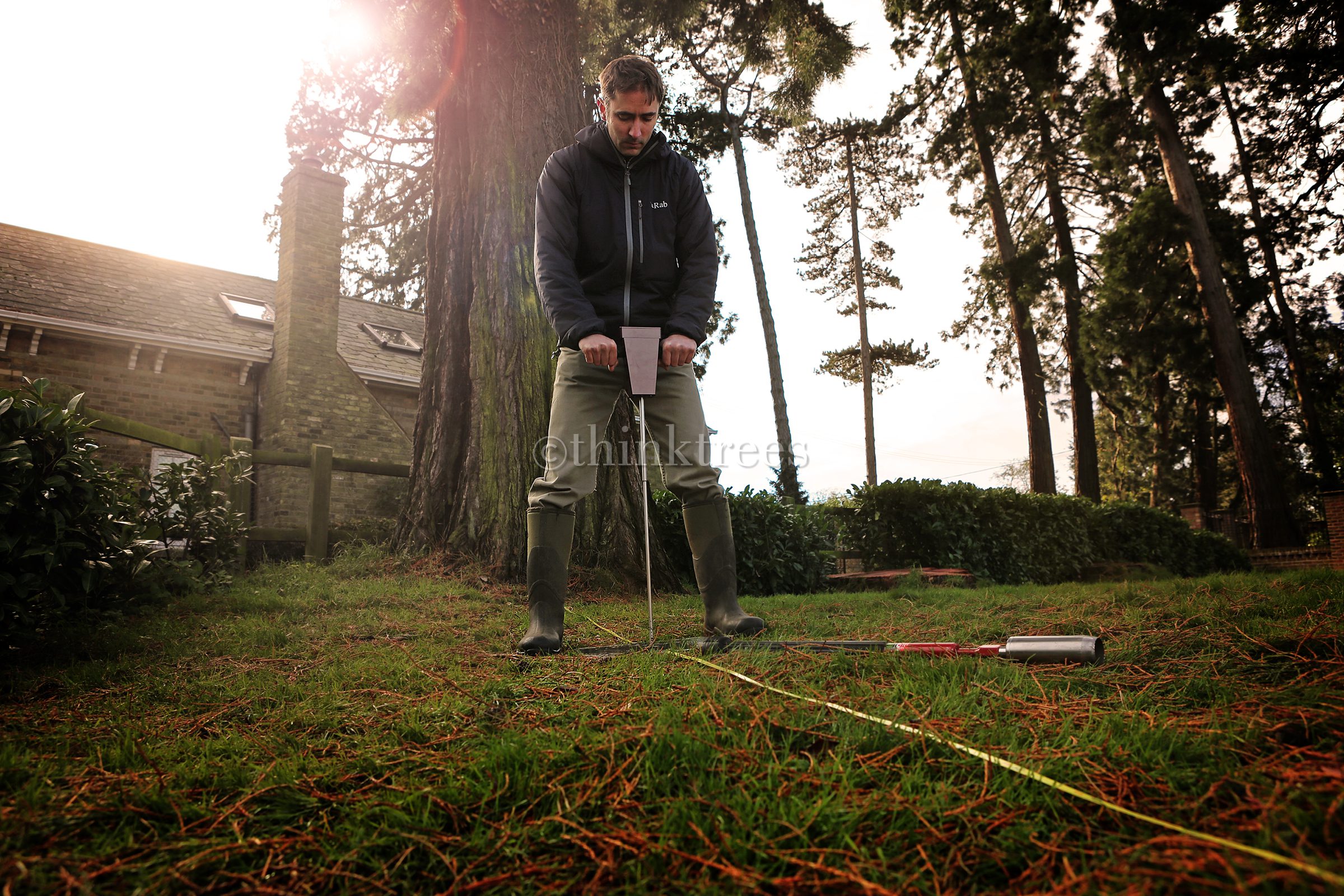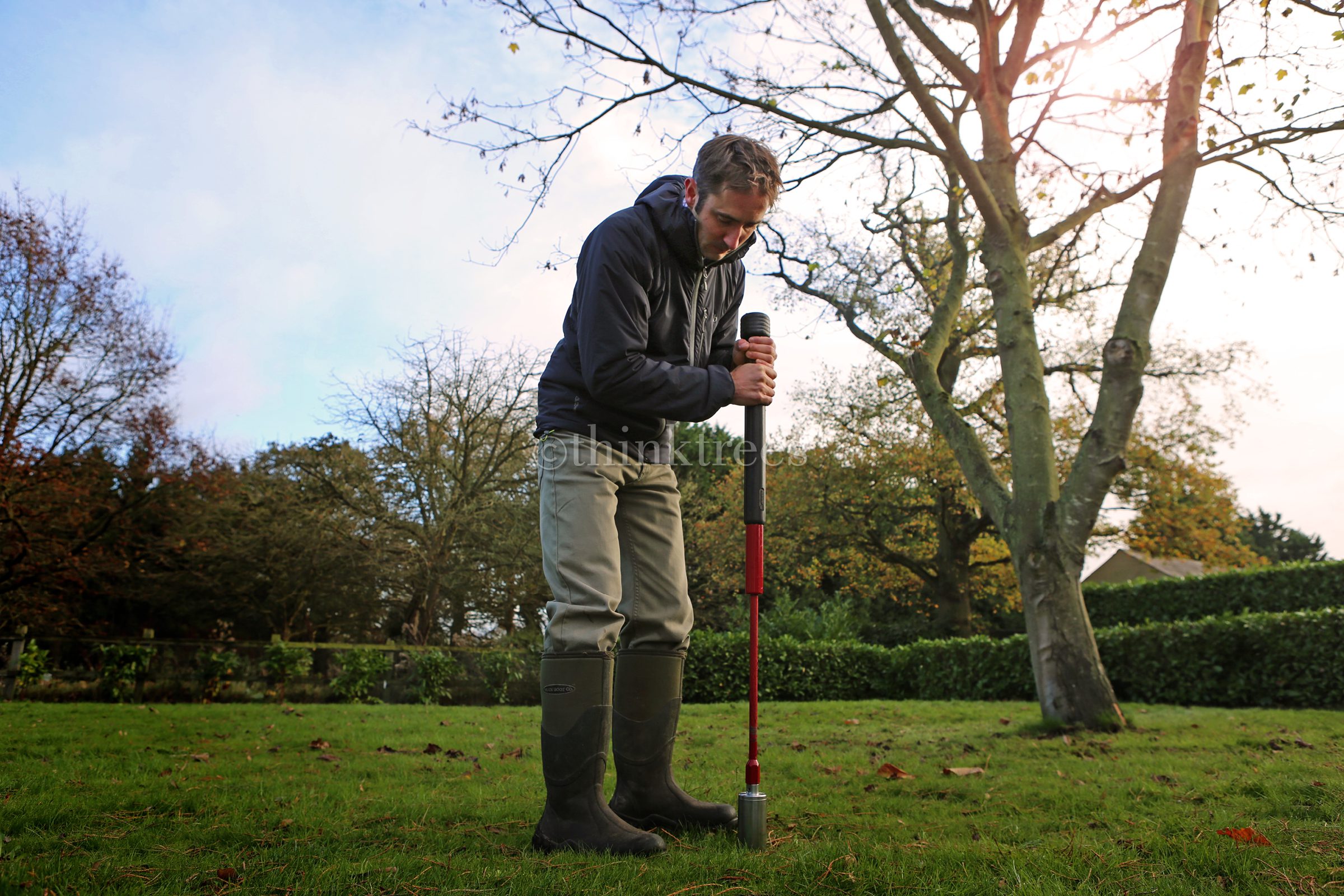Soil sampling
The physical and chemical properties of soils have an enormous influence on the vegetation that they support. Poor soil structure and reduced nutrient levels can both have a significant effect on tree health. Soil type is also an important factor when considering the impact that trees may have on adjacent buildings. We are able to extract soil samples for a range of analysis.

Using a core sampler enables us to extract undisturbed samples of soil. These are taken, primarily, to measure the bulk density of soils. This information enables us to determine the extent of the compaction and whether it is so severe that the soil conditions are no longer conducive for root growth.

The use of an auger enables us to obtain soil samples from a depth of up to approximately 2m. These samples can be used for a range of analysis including:
- Texture – Texture is the proportion of sand, silt and clay. This information can be used to evaluate site characteristics such as drainage and potential for compaction, as well as assessing the suitability of trees species for planting.
- Soil acidity/alkalinity (pH) – Knowing the pH of the soil is also useful when assessing the suitability of a tree species for planting. Additionally, it can be used in the diagnosis of nutrient deficiency in trees. This is because the availability of different nutrients varies depending on the acidity or alkalinity of the soil.
- Plasticity index – Determining a soil’s plasticity index is most applicable when assessing the potential for tree- related subsidence or heave damage to foundations. The plasticity index of a soil is a measure of it’s volume change potential.
In addition to the above, we are currently investigating soil testing to analyse soil microbiology, in particular the ratio of bacteria to fungi, as it is believed that the correct balance of beneficial mirco-organsims can keep plant pathogens at bay as well as increase the availability of nutrients. If you require soil testing for this purpose, or would like to participate in research to assess the efficacy of compost tea, please contact us.


